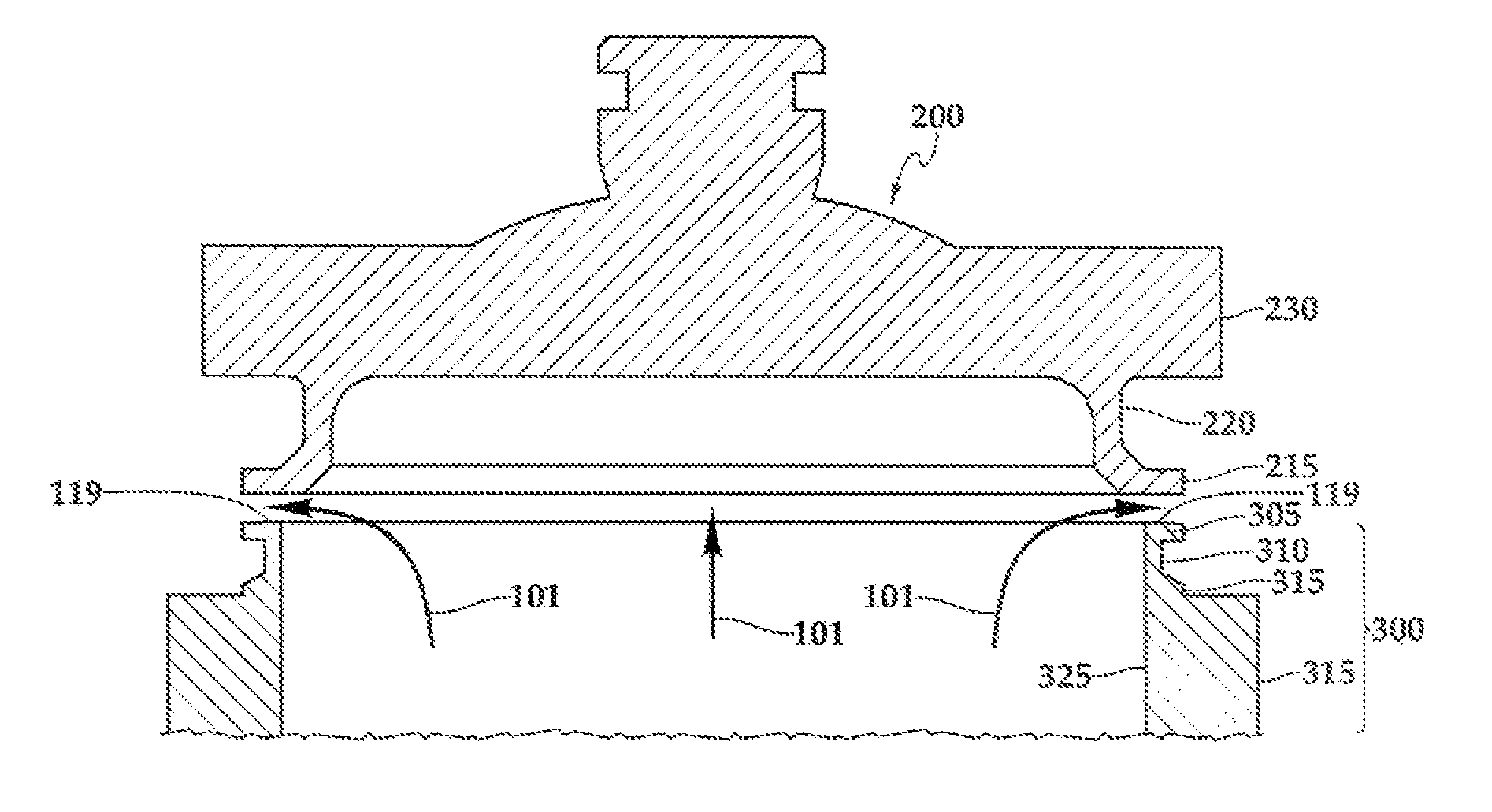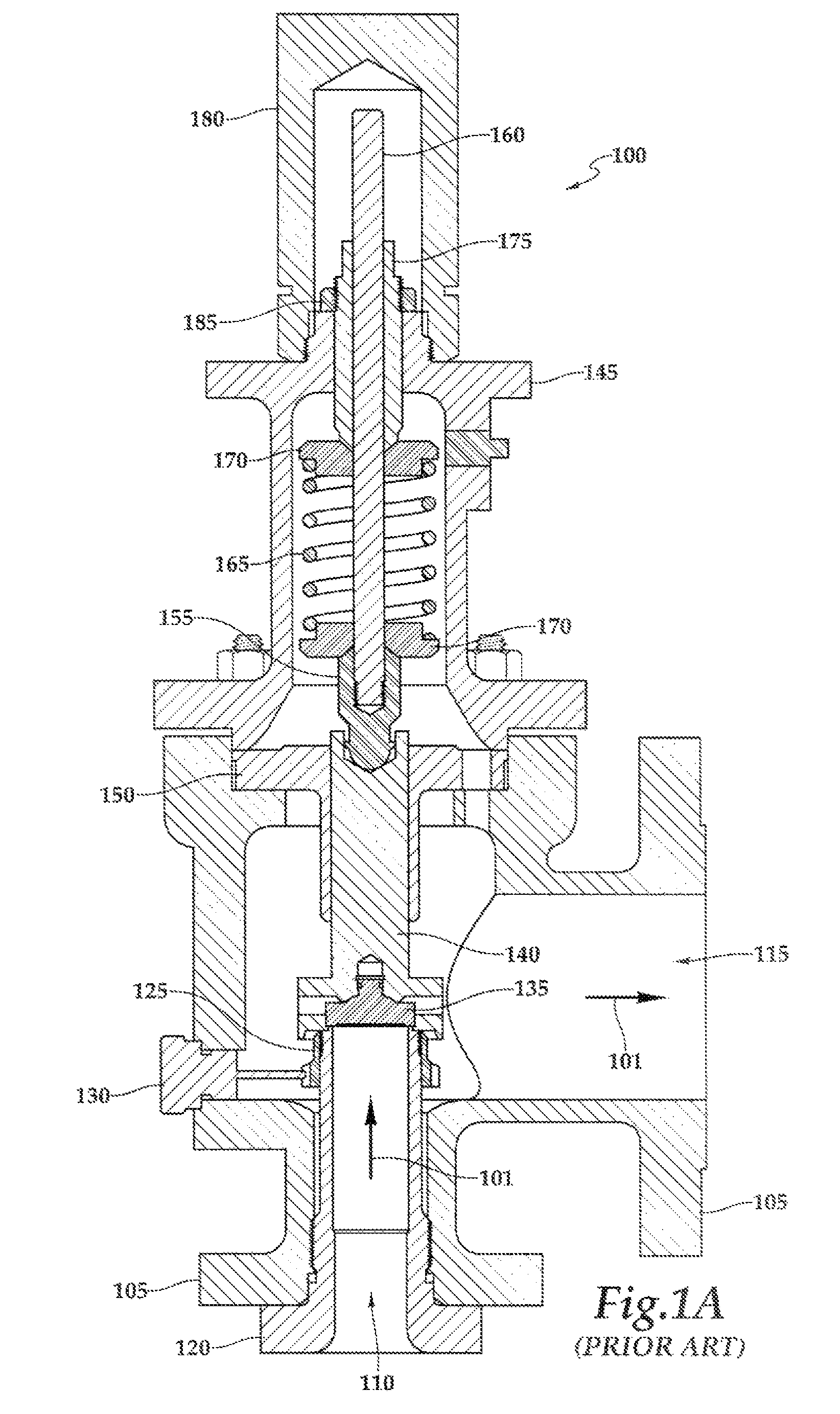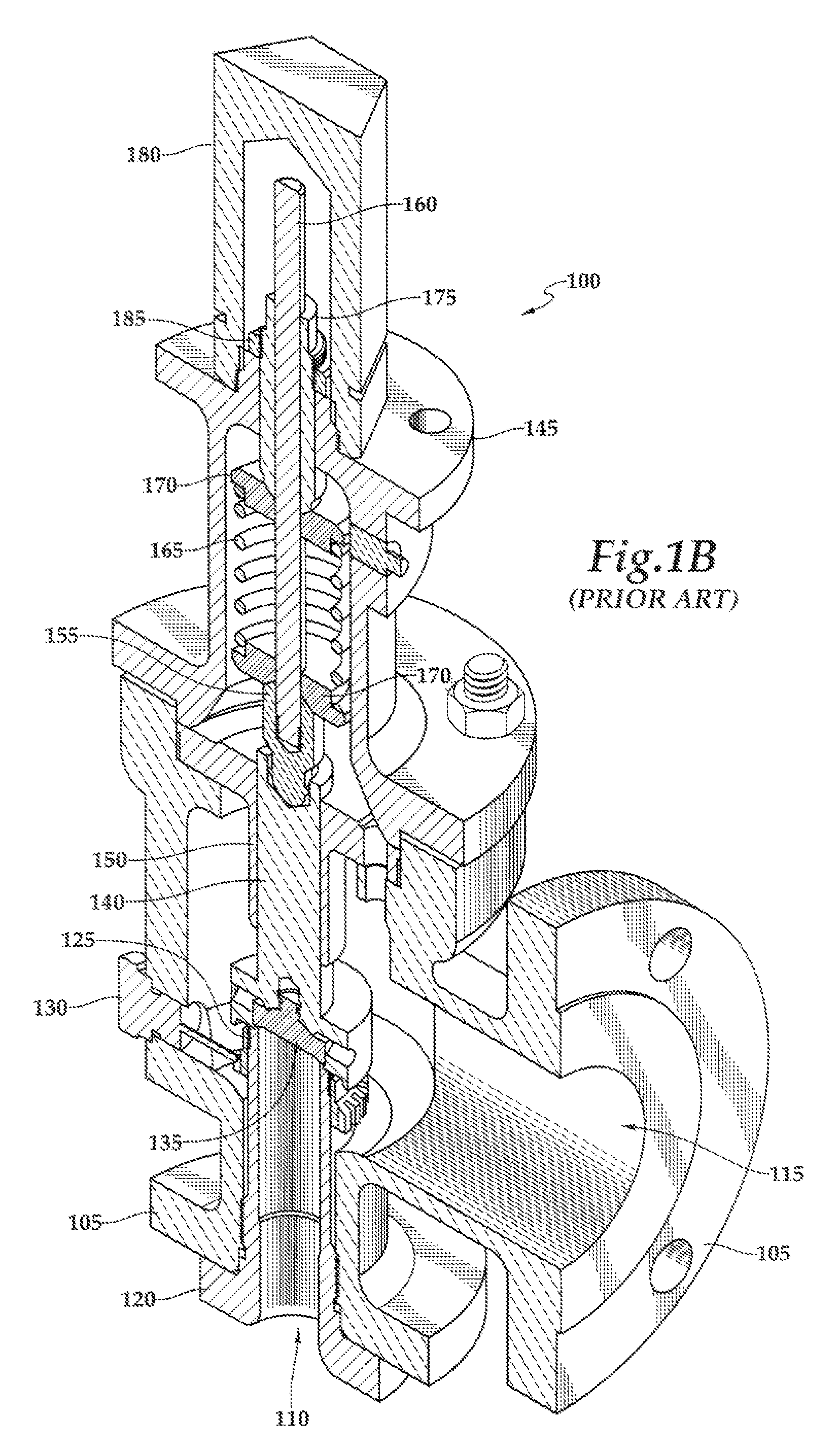Pressure relief valve
a pressure relief valve and valve body technology, applied in the field of pressure relief valves, can solve the problems of preventing the valve from maintaining the desired pressure seal, and causing premature and/or undesirable leakage of prior art pressure relief valves, so as to prevent or minimize leakage, minimize and/or prevent leakage, the effect of preventing or minimizing leakag
- Summary
- Abstract
- Description
- Claims
- Application Information
AI Technical Summary
Benefits of technology
Problems solved by technology
Method used
Image
Examples
Embodiment Construction
[0020]Reference is now made to the drawings wherein like reference characters indicate like or similar parts through the figures.
[0021]A pressure relief valve (PRV) according to the present disclosure may include a disc, a disc holder, a nozzle, and a mass-spring-damper system that allows for a fluid (e.g., gas, liquid, or multiphase fluid) within a system, such as a piping system or pressure vessel, to be relieved by operation of the PRV when the fluidic, pressure of the fluid exceeds a predetermined threshold. In some embodiments, the PRV may be used for cryogenic service, where a process fluid circulated to the PRV is at a lower temperature than an ambient condition at an outlet of the PRV. “Cryogenic service,” when used in the present disclosure, refers to applications in which a temperature of the process fluid circulated to the PRV is within one of the following temperature ranges: −21 to −75 F (e.g., propane as the process fluid); −76 to −150 F (e.g., ethylene as the process ...
PUM
 Login to View More
Login to View More Abstract
Description
Claims
Application Information
 Login to View More
Login to View More - R&D
- Intellectual Property
- Life Sciences
- Materials
- Tech Scout
- Unparalleled Data Quality
- Higher Quality Content
- 60% Fewer Hallucinations
Browse by: Latest US Patents, China's latest patents, Technical Efficacy Thesaurus, Application Domain, Technology Topic, Popular Technical Reports.
© 2025 PatSnap. All rights reserved.Legal|Privacy policy|Modern Slavery Act Transparency Statement|Sitemap|About US| Contact US: help@patsnap.com



